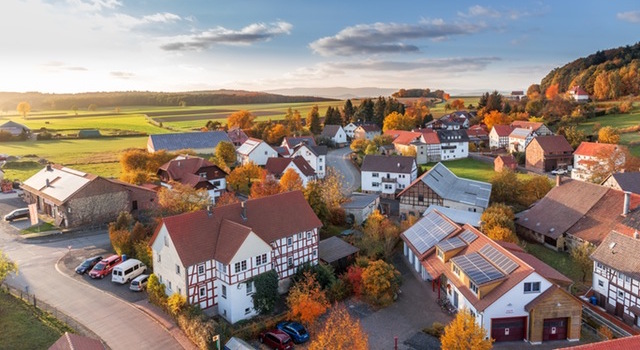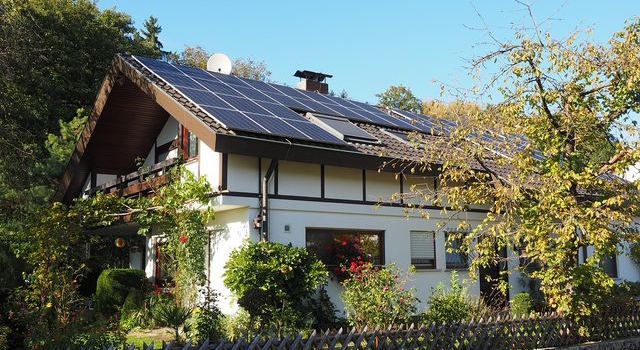How Big and Expensive Is a 12 kW Solar System?

Interested in installing a 12 kW Solar System, but not quite sure what 12 kW actually means?
First things first, kilowatts (kW) is a measure of an installation’s size. Basically, kW is a measure of how much electricity the solar installation can produce in a single instant. The average residential solar installation in the US is 5.6 kW, so a 12 kW solar system is over 2x bigger than the national average! However, 12 kW is by no means the biggest solar system homeowners install (check out our article on 20 kW to read about even bigger solar installations!).
Take a look below to see how big a 12 kW installation really is, what it can power, and how much it costs!
Efficiency First!
No matter if you’re installing a small 2 kW system or a huge 20 kW system, take some time before your installation date to perform some easy energy-efficiency measures. Replace incandescent light bulbs with LEDs, add weather-stripping around doors and windows, and install low-flow faucets in your sinks. All of these quick, low-cost efficiency measures can mean big time savings on your electricity bill. And the lower your bill, the smaller your solar installation needs to be – helping you spend less on solar and save even more money! So before you go solar, remember to swap out those light bulbs!
How big is a 12 kW solar system?

Take a look below for some common ways to evaluate the size of a solar installation:
What does 12 kW actually mean?
A 12 kilowatt solar installation produces 12 kilowatts of electricity in a single moment (and in perfect conditions). To put this in context, a typical LED light bulb is around 9 watts so that 12 kW solar installation could power over 1,330 LED light bulbs! (Keep in mind that this measurement is in perfect test conditions. In real life, the installation would produce less as wiring, weather, and equipment efficiency all lower the total energy output of solar installations. In fact, the National Renewable Energy Lab, in their PV Watts solar output calculator, recommends accounting for all these losses by adding a 14% decrease in production, so our 12 kW installation would really produce around 10.3 kW up on the roof).
How many solar panels is that?
Residential solar panels typically produce around 260 watts of power each, so a 12 kW system typically requires around 47 solar panels. If you need to cut costs where you can, lower efficiency solar panels hover around 240 watts, so you’d be looking at 50 panels. If you’re short on roof space, you can grab some high-efficiency panels that produce 300 watts of electricity, letting you install only 40 panels!
How much space does that take on my roof?
A residential solar panel usually clocks in around 38” x 65” (roughly 3’ x 5’), so a 47 panel installation takes up about 806 square feet – the same size as a racquetball room. Obviously, if you purchase high-efficiency solar panels, you’ll need fewer panels and your dimensions will be smaller. If you buy lower-priced, less efficient solar panels you’ll need more panels and your dimensions will be larger.
If you’re looking up at your roof right now, wondering if there’s space up there to fit 800 square feet of solar panels, don’t worry! Installers can install solar panels in small groups (usually at least 3 panels in a group) all over your roof, facing different directions and tilts. This type of installation requires a special inverter known as microinverters that optimize each solar panel individually. Microinverters are more expensive than the more commonplace string inverter, but if you have a complex roof, they really open up space on your roof.
How much does a 12 kW solar system cost?
While installation costs vary by region and installer, in 2016 the National Renewable Energy Lab found residential solar installations in the US cost an average of $2.93 per watt before applying any financial incentives. At this rate then, a 12 kW system costs around $35,160.
That seems like a lot – and it certainly is – but let’s put that number into perspective. First, there’s the 30% federal Residential Renewable Energy Tax Credit, which is a dollar-for-dollar discount in your total installation cost, therefore dropping your total from $35,160 to just $24,612!
Secondly, there are likely other incentives available for homeowners going solar in your area, so be sure to check out your utility, city, and state websites to see what kind of incentives they offer. DSIRE (Database of State Incentives for Renewables and Efficiency) is a great tool to see what rebates, tax credits and exemptions, and net metering are available to you. And all of these incentives can drop your installation cost even further, saving you even more money!
How much money can I save with a 12 kW solar system?
$24,612 is quite a lot of money, so the next logical step is wondering how much can you save with a 12 kW system. If you save more than you spend, it makes financial sense to install! So how much money can you save with a 12kW system? Let’s do the math!
To calculate your savings, we need to compare your total solar installation cost of $24,612 to your total cost if you continued to purchase all your electricity from the utility for the next 25 years (the typical estimated life of a solar installation).
- Your 12 kW installation costs $24,612 after applying the 30% federal tax credit. Your state, utility, or city probably offers additional incentives that can further drop the cost, but we won’t add those here.
- To calculate how much you’d pay the utility over the next 25 years, we need to know their current rates. For our example, let’s say you live in Utah, where at $0.1069 per kWh, electricity is fairly cheap.
- To compare these very different costs ($24,612 and $0.1069 per kWh), we need to have some common ground between them: the same amount of electricity. We need to know how many kilowatt-hours a 12 kW solar system would produce in Utah over 25 years. To do this, we can use the National Renewable Energy Lab’s online Solar Calculator, PV Watts. (PV Watts is easy to use and available at no cost, so go try it out to see how much a 12kW system will produce in your area!)
- We find a 12 kW installation in Utah with all solar panels facing directly south would produce 17,531 kWh per year. Buying 17,531 kWh from your local utility would cost $1,874!
- Now that we know how much electricity a 12 kW installation produces in a year, we need to estimate out to 25 years so we can compare total costs.
- Because of age and soiling from dirt and dust, solar panel production drops about 0.08% each year. Accounting for this, after 25 years your 12 kW installation will have produced 398,671 kWh! Wow!
- Before calculating how much you’d pay the utility for 398,671 kWh over the next 25 years, we need to account for any increases in their rates that you would have to pay. On average, utilities increase rates about 2.5% each year. So after 25 years, you’ll have paid $65,459 for 398,671 kWh!
- Subtracting your original investment of $24,612 from $65,459, we see you can save $40,847 over 25 years by installing a 12 kW installation! If your electricity rates are higher (which they probably are) you could see even more savings going solar!
Follow the steps above to calculate your own savings from a 12 kW solar system. After seeing how much money you’ll have left in your pocket after 25 years, you’ll probably be ready to start calling installers today! Then you can blow all that extra cash you’ll have on that new Tesla that you’ve been wanting!
Additional information:
